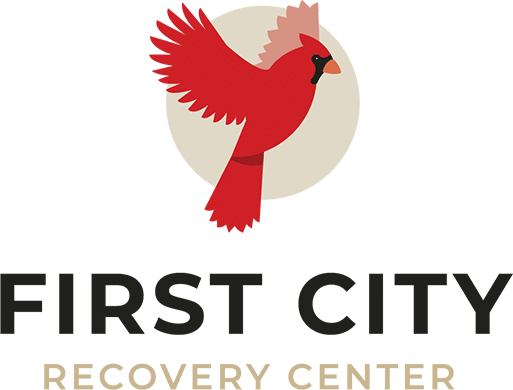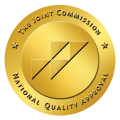Social Drinking, Binge Drinking, and Alcoholism: What Are the Differences?
As researchers gain more insight into alcohol’s effect on the body, increasing numbers of people are questioning and evaluating their drinking habits. While there aren’t ironclad standards for what constitutes alcoholism, there are some general guidelines regarding social drinking, binge drinking and over-drinking behaviors.
Table of Contents
ToggleWhat Constitutes a Drink?
Before diving into the difference between social, binge and alcoholic-level drinking, let’s review what constitutes a drink. The first thing to understand is that alcoholic beverages have different “proofs,” a measurement of the drink’s alcohol content. In this context, the word “proof” derives from an English tradition dating back to the 1500s. In those days, British authorities levied higher taxes on liquor that contained a higher amount of alcohol. To determine the level, an official would soak a gun pellet in the drink and try to set fire to the gunpowder inside. If the pellet lit up, the liquor was deemed a “proof spirit” because the official had “proof” that it contained a high amount of alcohol.
Today, proof measurements in the United States represent two times the alcohol by volume. For example, a 40-proof bottle of liquor is 20% alcohol.
Since alcoholic beverages have different proof levels, not all cocktails are created equal. Typically, one 12-ounce can of beer, 8 ounces of malt liquor, 5 ounces of wine, and a shot of 80-proof liquor — like whiskey, rum, vodka or gin — all constitute one drink.
Why Is Too Much Alcohol Bad for the Mind and Body?
Excessive amounts of alcohol can be ruinous to both the body and mind. The following covers some of the effects of alcohol:
• Erodes the immune system: The immune system is the body’s built-in doctor. It fights germs, viruses and dangerous outside invaders. But alcohol is like kryptonite for the immune system because it slows down the bacteria-fighting white blood cells. Since heavy drinkers have diminished immune systems, they’re much more likely to die from pneumonia, tuberculosis and various forms of cancer, especially breast cancer.
• Breaks down the skeletal system: Alcohol slows new bone production, so drinkers are more likely to suffer from osteoporosis. Moreover, alcohol wreaks havoc on muscles and weakens them.
• Causes reproductive problems: Men who drink too much are at higher risk of erectile dysfunction; women who drink too much may experience hormonal imbalances that affect fertility.
• Poisons the circulatory system: Studies show that over-drinking is terrible for our circulatory systems, especially for women. Too much alcohol can lead to heart disease, irregular heartbeat issues, high blood pressure and an increased risk of stroke.
• Results in digestive system issues: Alcohol makes quick work of the digestive system. It hampers a host of digestive processes, including bacterial control and nutrient absorption. Alcohol also increases your chance of getting heartburn, acid reflux, gastritis, stomach ulcers, hemorrhoids and internal bleeding.
• Causes central nervous system disruptions: Have you ever wondered why people’s speech is slurred after one too many drinks? It’s because alcohol affects the brain. Falling and blacking out are also connected to disruptions in the central nervous system caused by alcohol.
• Affects the excretory system: Drinking too much may interrupt normal insulin production and create toxic substances that can destroy the pancreas. The liver, which breaks down harmful substances in the body, is also exceptionally vulnerable to over-drinking. When things get out of control, people may succumb to hepatitis, jaundice and cirrhosis of the liver. Bladder, kidney and prostate inflammation are also possibilities.
What Are the Alcohol Intake Recommendations?
According to the Centers for Disease Control and Prevention, male adults should not consume more than two alcoholic drinks per day, and females should limit intake to one drink or less a day. Why is it safer for men to drink more alcohol than women? For starters, the bodies of biological women have less water and more fat than biological men’s bodies. Since water dilutes alcohol, male organs aren’t as affected by it. An enzyme called alcohol dehydrogenase also plays a role. Females have less of it than males; as such, more alcohol ends up in females’ bloodstreams. The cumulative physiological effect is that one drink for a biological woman is equivalent to two drinks for a biological male.
However, we should note that the alcohol consumption jury is still out: Researchers disagree about what constitutes a healthy amount of alcohol. Some believe that completely eliminating it from your diet is the safest and best route while others think moderately imbibing has a few potential benefits. Additionally, the parameters of social drinking are heavily influenced by culture and society. After all, what counts as sober in one country may be considered inebriation in another country.
What Is Social Drinking?
Low-risk drinking is often called “social drinking” or “moderate drinking.” Individuals who fall into this category typically don’t have a problem controlling their intake and only consume seven or fewer drinks a week. Moreover, social drinkers rarely, if ever, have more than three alcohol units in a day.
For example, a social drinker may meet up with a friend on Wednesday for two drinks, grab one glass of wine with co-workers on Friday, and go out to dinner on Saturday where they enjoy two drinks. Otherwise, they don’t consume alcohol.
Social drinkers tend to exhibit certain behaviors and attitudes surrounding alcohol. Generally, they:
• Don’t spend considerable time thinking about alcohol and when they’ll drink next
• Rarely make poor decisions or get into trouble because of alcohol
• Don’t need to drink to have fun
• Rarely, if ever, regret things they say or do when drinking
• Only drink occasionally as opposed to nightly
What Is Binge Drinking?
Binge drinkers are individuals who surpass recommended consumption levels on a semi-regular basis. They may not drink every night, but when they do, over-indulging is common. Signs that you or someone you love may have entered into the binge-drinking category include:
• Getting DUIs and other traffic violations related to impairment
• Shirking responsibilities at home or work
• Engaging in hostile or dangerous situations because of alcohol
• Continuing to use alcohol despite adverse effects
Binge drinkers can often function normally in their day-to-day lives, but it’s a dangerous habit. During this stage, the body adapts to higher alcohol intake and can develop a chemical dependence. When this happens, people are more likely to continue overusing, and many plunge into full-blown alcoholism.
Moreover, binge drinkers may face many of the same health challenges as alcoholics, including high blood pressure, cancer and increased exposure to dangerous situations.
What Is Alcoholism?
Before we define alcoholism and what constitutes an alcoholic, it’s important to acknowledge that every individual is different, and thresholds vary. Physical and psychological profiles run the gamut, and what’s acceptable for one person may be a disaster for another.
Caveats aside, there is some consensus among researchers and addiction specialists regarding the profile of an alcoholic. According to the Substance Abuse and Mental Health Services Administration, people who binge drink more than five times a week are likely dealing with some form of alcoholism. Other signs that you may have an alcohol abuse problem include:
• Using drinking as a way to both reward yourself for accomplishments and soothe yourself in the face of setbacks
• Consuming alcohol daily
• Blacking out regularly
• Letting alcohol guide your social decisions
• Engaging in risky behavior when under the influence
• Not being able to set and maintain alcohol consumption limits
• Constantly regretting things you do or say while drinking
• Allowing alcohol to interfere with your work and relationships
• Being dishonest about the amount of alcohol you drink
Alcoholics often have a physical dependency, so while quitting drinking “cold turkey” is possible, it’s difficult. Moreover, it may be dangerous depending on a person’s consumption level. For those who want to quit, professional help goes a long way. Firstly, it provides a sturdy support system. Secondly, people trained in the psychology and physiology of addiction have invaluable tools and insights that have been proven to help people succeed.
How Common Is Excessive Drinking?
You may have heard that “everyone is an alcoholic at some point in their lives.” It’s not a universally true statement, but there is some truth to it. According to the National Institute of Alcohol Abuse and Alcoholism, approximately 72% of people experience a period of excessive drinking in their lifetime. For many folks, it’s between the ages of 18 and 24. Other people encounter issues later in life.
Some individuals who go through a single stage of heavy drinking grow out of it on their own and don’t develop a physical dependency. Consulting with an addiction specialist may help you determine your status.
Can Social and Binge Drinkers Be Alcoholics?
Defining who belongs in what drinking category can be difficult. Frequently, people who believe they’re healthy social drinkers are actually binge drinkers, and people who consider themselves binge drinkers may already be alcoholics.
Since alcohol distorts perceptions, many people don’t realize how much they actually drink. Plus, serving sizes vary. A glass of wine at a bar or restaurant could be 12 ounces — the equivalent to almost three drinks, not one!
Consulting with addiction specialists is often a good option if you think you may have a drinking problem. They can help you assess the situation to determine if you’re a social drinker, binge drinker or alcoholic.
Questions to Ask Yourself About Your Drinking
Are you worried about your alcohol consumption? If so, you may want to ask the following questions — and be honest with yourself about the answers. If you answer yes to several, it may be time to rethink your relationship with alcohol.
• Do you drink two or more alcoholic beverages between five and seven times a week?
• Do you sometimes black out after drinking?
• Have you gotten in trouble with law enforcement for something you did that’s linked to drinking?
• Is your work or family life suffering because of alcohol?
• Are you hiding how much you drink from friends and family?
Help Is Around the Corner
If you or a loved one is struggling with over-drinking, it’s possible to climb out of the rut. It’s never too late to turn around and start walking the other way. If you’re ready to take the first step, First City Recovery Center has an experienced team to help you navigate the path to sobriety. We offer a full range of treatment programs, including medical detox, partial hospitalization and outpatient therapy. Get in touch today to learn more and start exploring your options.

MD, Psychiatrist
Dr. Vahid Osman, MD is a psychiatry specialist in Indianapolis, IN.
Dr. Osman completed a residency at Austin State Hospital. He has over 32 years of experience in Psychiatry & Behavioral Health. He is board certified by the American Board of Psychiatry and Neurology.




